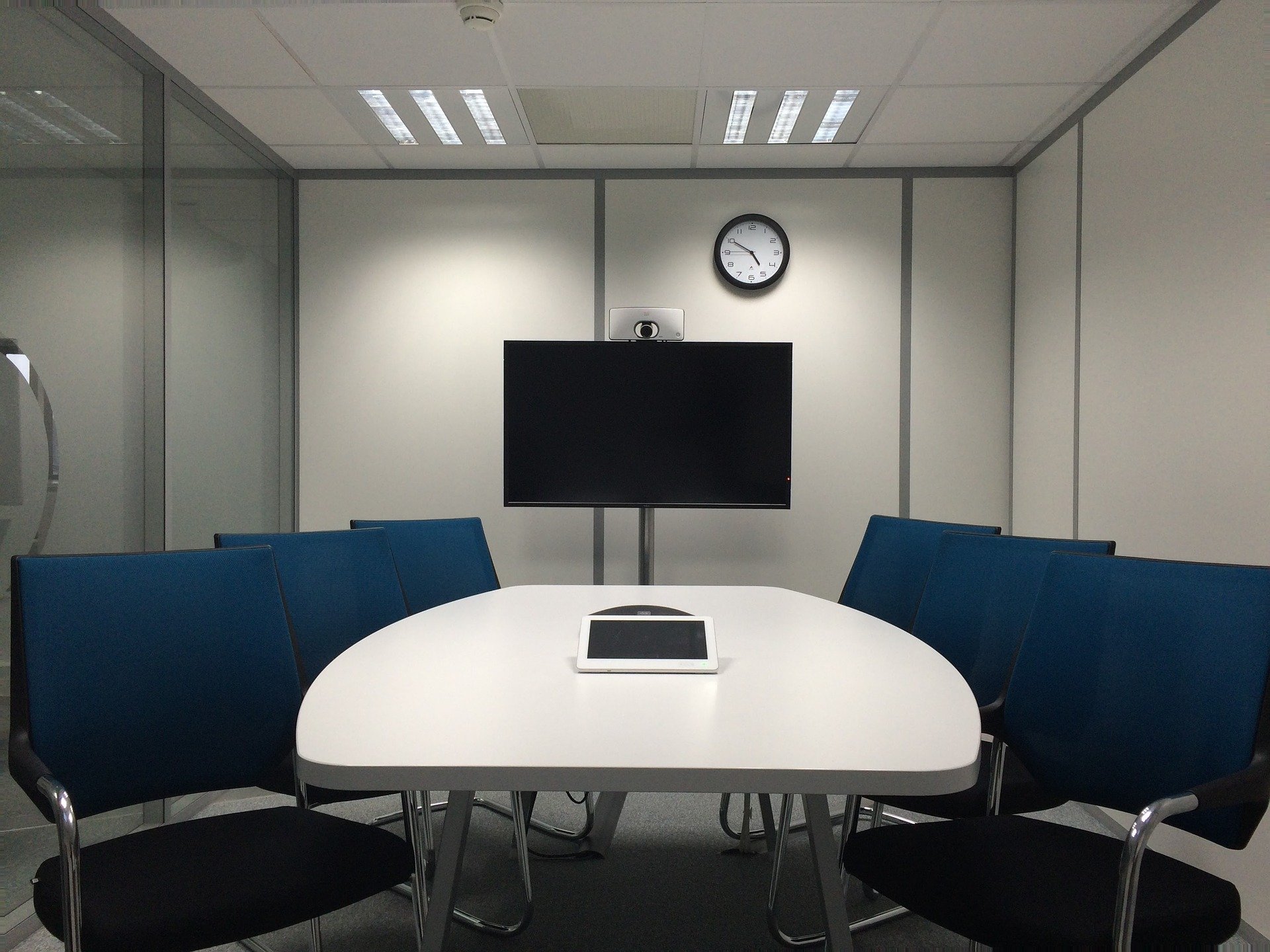The term huddle room has officially entered the business vernacular. Decision-makers know what they are and expect to have at least one huddle room as part of their overall office layout. But just because the term is familiar doesn’t mean that every huddle room design maximizes productivity.

If you are getting ready to implement huddle rooms in your space—or if you are interested in maximizing the productivity of your existing huddle rooms—here are five expert design tips to get you started.
- Consider the layout. The first step to a productive huddle room design is understanding and articulating how your space will be used. Will your huddle room be used mostly for local meetings? Do you frequently use video conferencing to connect with off-site employees? How many participants are in most meetings? Do you need a full-size conference table? Once you know how your users will be using the room, you can choose the layout, furniture, and technology that best meets those needs. Room layouts don’t have to be boring and static—they can be flexible to meet a variety of needs. For example, one large room could be temporarily converted into three smaller, side-by-side huddle rooms when needed, using simple room dividers.
- Minimize noise and distractions. While huddle rooms are meant to be small, that doesn’t mean that you can just place them anywhere. Huddle spaces that are out in the open are vulnerable to noise and other distractions that make productive meetings and video conferencing difficult at best, and impossible in some cases. Connecting your architect and AV expert early in the design process can help ensure your huddle rooms are built out in a way that maximizes space and productivity.
- Prioritize ease of use. It can be tempting to fill your huddle rooms with every shiny new tech gadget the audiovisual industry has to offer, but users would rather have technology that is functional than technology that is fancy. Whether you are building a new huddle room or trying to improve an existing one, talk to users and find out what their preferences and frustrations are. Addressing those concerns and making huddle rooms easy to use will make them more appealing.
- Simplify connectivity. Whether you're hosting a local meeting or video conferencing with remote employees, a key feature of huddle rooms is that they can accommodate ad hoc, on-the-fly meetings, and those meetings need to start quickly and efficiently. Simple connectivity in your huddle rooms is critical to productivity. Users should be able to connect any device wirelessly or with a single cable.
- Make technology accessible. Your huddle room technology should be easy to use—and easy to find. That means displays should be the right size for participants to see comfortably from anywhere in the room, and microphones and speakers should pick up and provide clear audio for participants both in and outside the room. Cables should be easy to find, not buried under a table, and there should be a dedicated storage space for smaller items—like the display remote—so the first five minutes of every meeting aren't spent hunting for them.
Start Improving Huddle Room Productivity Today
The easiest way to ensure your huddle room design supports optimal productivity is to involve an AV integrator at the beginning of the architectural design process. However, there are also simple fixes for existing huddle rooms that can improve productivity. Wherever you are in the huddle room design process, we can help you make the most of your space, so feel free to contact us for a consultation.


